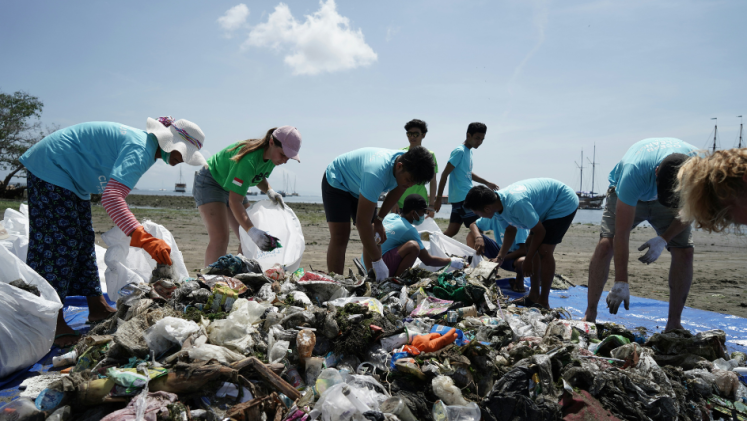From our streets to our waterways, plastic waste litters almost every corner of our environment. The visible impacts of the pollution are striking, and the less visible effects on human and animal health are just as profound. Yet, plastic waste is only expected to grow. Since 2022, negotiations on a potential landmark treaty to end plastic pollution have been ongoing. The process, initiated through a resolution adopted by the United Nations Environment assembly, is heading towards the final stretch with a goal to be signed this November. In its largest meeting yet, parties and stakeholders met this past week in Ottawa, Canada, to shape the text that will be decided on later this year.
Here are five insights on negotiations to reduce plastic pollution:
The world now produces 400 million metric tons of plastic waste each year
We use plastic for everything: from single-use food and beverage packaging to our phone cases. Contrary to popular belief, much of it is not recycled and becomes waste that accumulates in our environment – our land, our rivers and our oceans. According to the United Nations Environmental Programme (UNEP), 1,000 million tons of plastic are forecasted to be produced by 2050.
Plastic production is a major contributor to CO2 emissions
Plastic production currently represents 5 per cent of global greenhouse gas emissions, as it is made from fossil fuels. This too is projected to get worse, as emissions from production are forecasted to jump to 20 per cent by 2050. Therefore, reducing plastic production is important to reaching the goals of the Paris Agreement.
The treaty is meant to address the full life cycle of plastics
The treaty will aim to end plastic pollution through a “life cycle approach” – from extraction to production, design, usage and disposal. Although parties will commit to taking effective measures on waste management, the goal of the treaty is to limit plastic production, trade and use altogether. For example, in the draft commitments reducing the use of single-use and microplastics are included. At the same time, mechanisms are to be proposed to promote best practices toward the management and design of plastic in line with a circular economy approach.
Ending plastic pollution in our marine environment is a critical goal
Parties are engaged in discussions not only about ending plastic pollution for the future, but also about addressing the existing plastic pollution already in our environment, much of which can be found in our aquatic ecosystems. According to UNEP, 19-23 million tons of plastic waste leak into our lakes, rivers and seas every year. This poses a significant risk to species and human life, as microplastics make their way into our food chains. Key provisions currently under draft would commit parties to create cooperation mechanisms to identify the most affected areas, threats to human health, species and habitats and ways to adopt mitigation and removal measures.
A legally binding agreement would raise ambition levels regarding environmental policy
A successful outcome would significantly boost multilateralism for the environment and be on par with previous agreements. For instance, the Montreal Protocol, signed in 1987, led to the phase out of ozone depleting substances. The overarching goal of the Paris Agreement is to limit global average temperature increase to 1.5°C above pre-industrial levels. However, like these precedents, disagreements persist over key language such as “do not allow” or “phase out”, financing and just transition. The current challenge is for parties to come to an agreement and deliver something of a similar magnitude.



